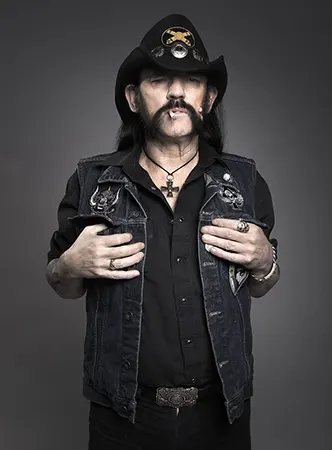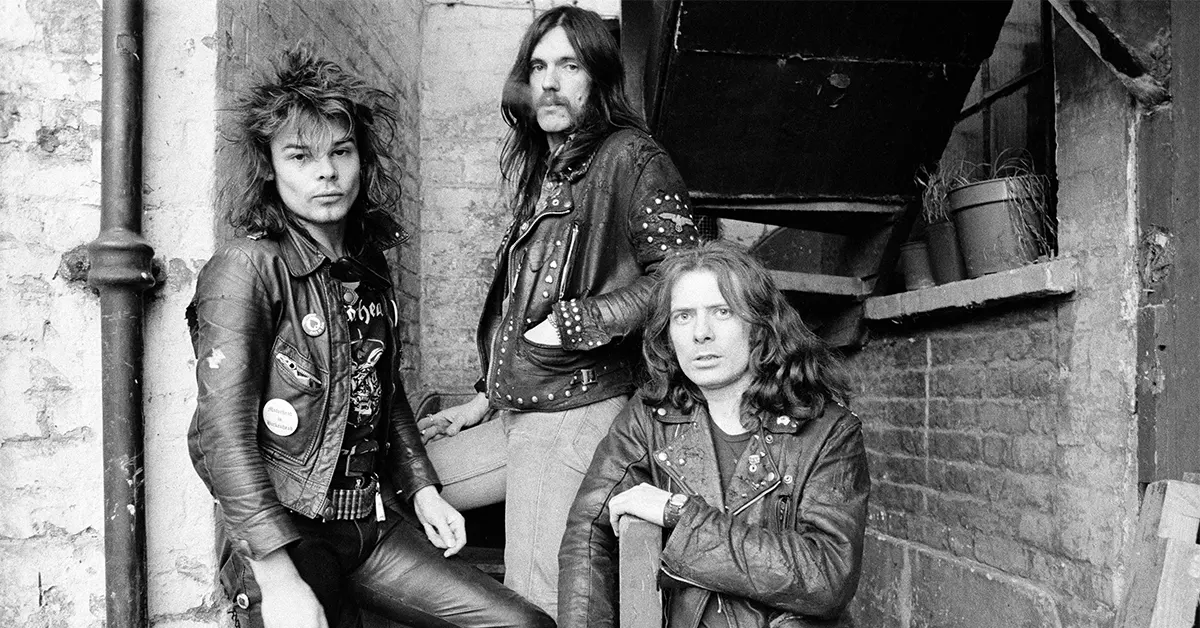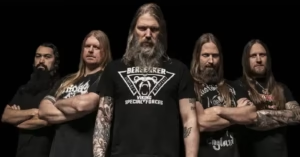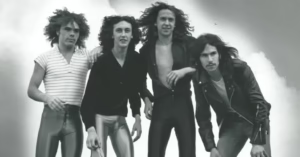Motörhead: Speed, Noise, and Rock ‘n’ Roll Fury
Motörhead. Born to Lose, Lived to Win: The Origins of Motörhead
Motörhead was founded in 1975 by Ian “Lemmy” Kilmister, after he was fired from the space rock band Hawkwind. Determined to create the loudest, fastest band in the world, Lemmy named the group after the last song he had written for Hawkwind. He recruited guitarist Larry Wallis (ex-Pink Fairies) and drummer Lucas Fox, but soon replaced them with “Fast” Eddie Clarke and Phil “Philthy Animal” Taylor, forming the classic Motörhead trio.
Lemmy, with his gravelly vocals, thunderous bass, and don’t-care attitude, was the embodiment of Motörhead’s spirit: raw, aggressive, and absolutely uncompromising.

Motörhead. The Golden Era: 1977–1983
Motörhead released their self-titled debut album in 1977, but it was with Overkill (1979) and Bomber (1979) that they really carved their niche. These albums combined punk energy with heavy metal weight, helping to ignite what would become known as speed metal.
Ace of Spades (1980)
A landmark in heavy music. The title track, “Ace of Spades,” became Motörhead’s most iconic song — a speed-driven anthem that defined a genre and cemented the band’s outlaw image. The album was a commercial and critical breakthrough, reaching No. 4 in the UK.
No Sleep ’til Hammersmith (1981)
One of the greatest live albums in rock history, showcasing the band’s ferocious power on stage. It hit No. 1 on the UK Albums Chart, proving Motörhead was not just a cult act, but a major force.
Motörhead. Lineup Shifts and Challenges: 1984–1995
After Clarke’s departure in 1982 and Taylor’s temporary exit, Motörhead became a revolving door of guitarists and drummers. Notable replacements included:
- Brian “Robbo” Robertson (ex-Thin Lizzy)
- Würzel (Michael Burston)
- Phil Campbell (who would remain until Lemmy’s death)
- Pete Gill and later the returning Phil Taylor
During this period, albums like Another Perfect Day (1983), Orgasmatron (1986), and 1916 (1991) kept Motörhead relevant, although they struggled with label issues, financial instability, and changing musical trends.
Despite challenges, Lemmy refused to compromise, keeping the band’s sound fiercely consistent — no ballads, no trends, just dirty, loud rock ’n’ roll.
Motörhead. Relentless Revival: 1996–2015
The final incarnation of Motörhead — Lemmy, Phil Campbell (guitar), and Mikkey Dee (drums) — became the band’s longest-running and most stable lineup. They released a string of hard-hitting albums including:
- Overnight Sensation (1996)
- Inferno (2004)
- Motörizer (2008)
- The Wörld Is Yours (2010)
- Aftershock (2013)
- Bad Magic (2015)
These records received praise for sticking to the band’s roots while still delivering fresh energy. Motörhead’s late-career output proved they were more than legacy — they were still dangerous, still vital.
Motörhead. Lemmy’s Death and the End of an Era (2015)
On December 28, 2015, just days after his 70th birthday and the diagnosis of an aggressive cancer, Lemmy Kilmister passed away. His death marked the end of Motörhead — a band inseparable from its iconic frontman.
Within hours, tributes poured in from across the rock and metal world. Lemmy wasn’t just a frontman; he was a living symbol of hard rock’s rebellious soul.
Musical Style and Influence
Motörhead’s music was a unique blend of:
- Punk’s speed and rawness
- Heavy metal’s power and riffage
- Rock ‘n’ roll swagger
While often labeled as heavy metal, Lemmy rejected the term, stating: “We play rock and roll. It’s loud, it’s fast, and we’re Motörhead.”
They laid the foundation for thrash, speed, and extreme metal, influencing bands like Metallica, Slayer, Megadeth, Anthrax, and countless others. Motörhead’s stripped-down approach and high-speed attack rewrote the rules for heavy music.
Iconic Lineups
Classic Trio (1976–1982):
- Lemmy Kilmister – Bass, vocals
- “Fast” Eddie Clarke – Guitar
- Phil “Philthy Animal” Taylor – Drums
Final Lineup (1995–2015):
- Lemmy Kilmister
- Phil Campbell – Guitar
- Mikkey Dee – Drums
Discography Highlights
| Year | Album | Notable Tracks |
|---|---|---|
| 1977 | Motörhead | “Motörhead,” “Iron Horse/Born to Lose” |
| 1979 | Overkill | “Overkill,” “Stay Clean” |
| 1979 | Bomber | “Bomber,” “Stone Dead Forever” |
| 1980 | Ace of Spades | “Ace of Spades,” “(We Are) The Road Crew” |
| 1983 | Another Perfect Day | “Shine,” “Dancing on Your Grave” |
| 1991 | 1916 | “The One to Sing the Blues,” “Love Me Forever” |
| 2004 | Inferno | “Whorehouse Blues,” “In the Name of Tragedy” |
| 2015 | Bad Magic | “Thunder & Lightning,” “Sympathy for the Devil” (cover) |
Legacy and Recognition
- Grammy Award (2005): Best Metal Performance for their cover of Metallica’s “Whiplash”
- Influence on Metallica: Lars Ulrich credits Motörhead as the band that made him want to play metal
- Iconic Logo and Mascot: The Snaggletooth “War Pig” became a legendary symbol in metal culture
- Motörhead Whisky and Slot Machine: Lemmy’s lifestyle became as legendary as his music
Motörhead wasn’t about perfection or technicality — it was about attitude, speed, and defiance.
Interesting Facts
- Lemmy once claimed to have slept with over 1,000 women and drank a bottle of Jack Daniel’s every day for decades.
- Motörhead is one of the few bands embraced by both metalheads and punks alike.
- The band played more than 2,000 shows during their career.
- Lemmy’s ashes were placed in bullet casings and given to close friends like Rob Halford and Duff McKagan.





